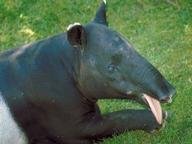Quiz Answer Key and Fun Facts
1. Three-toed sloths live in South and Central America, but in what places?
2. Some people want to call them three-fingered sloths, and to call the other kind two-fingered sloths. Why?
3. What gives a three-toed sloth its green color?
4. How do three-toed sloths poop? (It's a common question, because people have heard unusual rumors.)
5. You notice a discolored patch of fur, in shades of dark and light, on a three-toed sloth's upper back. What does that mean?
6. What other creatures do three-toed sloths host in their fur?
7. Three-toed sloths usually have one baby. What's its childhood like?
8. What sound do three-toed sloths make?
9. What species, if any, of the three-toed sloth is endangered?
10. Can three-toed sloths swim?
Source: Author
littlepup
This quiz was reviewed by FunTrivia editor
rossian before going online.
Any errors found in FunTrivia content are routinely corrected through our feedback system.
